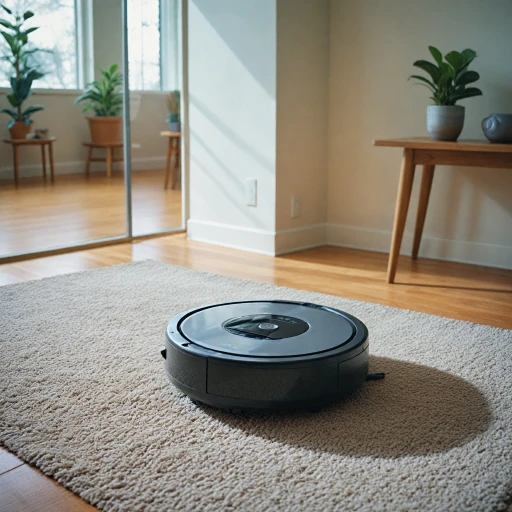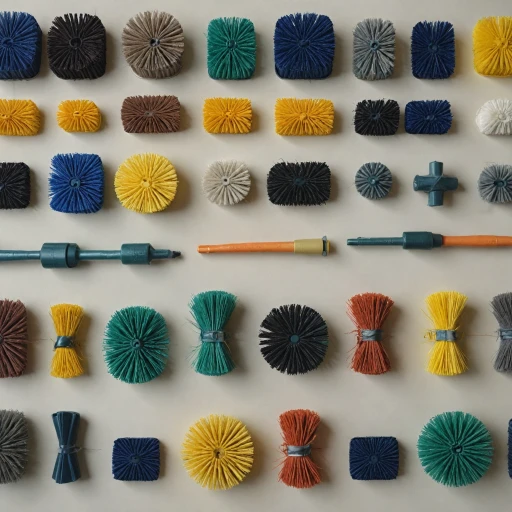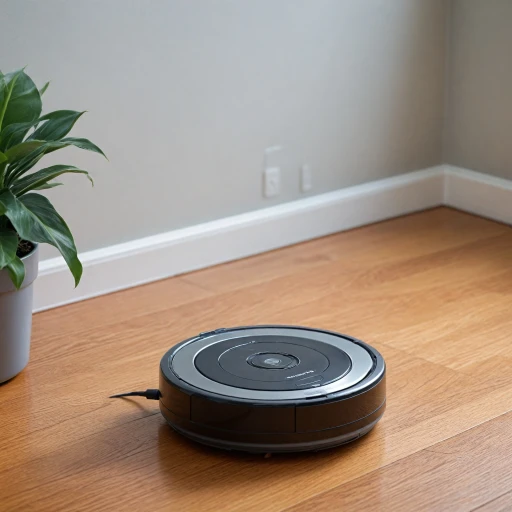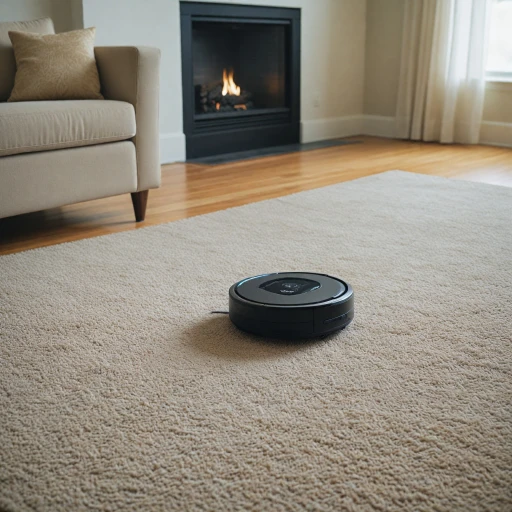The Role of Filters in iRobot Vacuums
The Essential Function of Filters in iRobot Vacuums
Robot vacuums, particularly the popular Roomba iRobot series, rely heavily on filters to maintain efficient functionality. These filters serve as a crucial component in ensuring that your floors remain as clean as possible, capturing dust, debris, and allergens that your vacuum encounters during each cleaning session. In most iRobot Roomba models, the filters play a part in the filtration process by trapping fine dust particles and allergens, which could otherwise be expelled back into your home's air. This is especially important if you or someone in your household suffers from allergies. While the filtration system significantly impacts the performance of your vacuum, it's important to understand how the series robots utilize their filters to enhance cleaning. The function of filters in iRobot products cannot be understated as they help in:- Protecting the internal components of the vacuum by keeping dust away from the motor and other sensitive parts.
- Reducing the need for frequent replacement iRobot parts, thus saving you money in terms of maintenance costs.
- Enhancing the overall lifespan of the device by ensuring it operates under optimal conditions without overexertion.
Types of Filters Used in iRobot Models
Exploring Filter Types Across iRobot Models
Understanding the different filters used in the various series of iRobot vacuums is essential when selecting or maintaining your device. Each Roomba series may employ unique filtering systems designed to enhance cleaning efficiency and user satisfaction.
Most iRobot Roomba models are equipped with a combination of primary and secondary filters. The primary filter is generally a simple mesh that captures larger particles and debris. The secondary filter, often a HEPA filter, is designed to trap smaller particles like dust mites and pollen, making it ideal for allergy sufferers.
- Standard Filters: These filters are commonly found in entry-level Roomba models. They are effective at catching standard household dust and dirt, but may require frequent replacements to maintain peak efficiency.
- HEPA Filters: Featured in mid to high-end models, these are designed to capture 99.97% of particles as small as 0.3 microns. Understand their importance in conjunction with a vacuum adapter for optimal filtering performance.
- AllergenLock Bags: Used in Roomba i7+ and s9+ models, these bags efficiently contain dust and debris, ensuring minimal contact during disposal.
When you buy a pack of filters, ensure they are compatible with your specific Roomba model to avoid issues with the device. Understanding the model-specific filters will help you save on unnecessary replacement costs and maintain the effectiveness of your robot vacuum cleaner.
It is also recommended to check the terms conditions of your purchase and refer to the privacy policy from the vendor to ensure a smooth buying process. For a seamless experience, consider adding your choice to the cart for streamlined purchases.
How to Maintain and Replace Filters
Simple Steps to Keep Filters in Top Shape
Proper maintenance of filters in your iRobot vacuums, including the well-known Roomba series, plays an integral role in prolonging the life of your device and enhancing cleaning performance. Here are some clear steps to ensure your filters are always in optimal condition:- Regular Check and Clean: Start by frequently examining your Roomba filter for dust accumulation or damage. Generally, it’s advisable to remove and clean the filter once a week or after every few uses. Additionally, remember to clean the side brushes and empty the bin regularly.
- Rinse with Caution: If your model supports washable filters, gently rinse it under water and allow it to air dry completely before reinserting it. Too much moisture can damage the filter or the vacuum itself.
- Timely Replacement: Standard filters, including HEPA filters, typically require replacement every two months. To ensure you always have stock items on hand, consider buying a compatible pack of replacement iRobot filters. Regular filter replacement avoids clogging issues and keeps the vacuum’s suction efficiency intact.
- Mind the Roomba Series Specification: While purchasing, verify the compatibility with your Roomba series robot to avoid any trade mishap. An incompatible filter can compromise performance and may not fit into the replacement bin. Check the terms and conditions on the supplier's page before adding to your cart.
Impact of Filters on Cleaning Efficiency
The Influence of Filters on Vacuum Performance
When it comes to robot vacuums like iRobot models, the efficiency of cleaning is not solely dependent on powerful suction but significantly on the filter quality. This is where the diverse types of filters within the Roomba series come into play, including popular choices like the HEPA filter. A high-quality filter ensures that the device captures fine dust particles and allergens effectively, offering cleaner air and helping to maintain optimal device performance. Filters in iRobot Roomba units, once clogged or worn out, can drastically reduce the vacuum’s ability to pick up dirt and debris. This drives the importance of understanding when and how to perform a filter replacement. Not only does a clean filter keep the vacuum operating at peak performance, but it can also prolong the device's lifespan by preventing the motor from overworking, which is a common consequence of obstructed airflow. It's also worth noting that each Roomba filter has unique compatibility requirements. Depending on the model of the Roomba series robot you own, matching the correct filter type is essential to ensure seamless operation. Whether you choose to buy a replacement from an online cart or purchase a pack in-store, always verify compatibility to avoid unnecessary expenses. In terms of cost, filters range in price, and buying in bulk often provides price savings. Investing in high-quality filter products compatible with your device can save you from frequent replacements. Always review terms and conditions about returns and warranties when purchasing filter replacements to ensure peace of mind. Maintaining your robot vacuum involves not just replacing filters but also caring for other parts like side brushes. Ensuring regular cleaning of these elements can significantly influence the cleaning performance of your Roomba or iRobot Braava, keeping your home spotless. Proper upkeep guarantees that when you replace filters, the entire device functions optimally for an enhanced cleaning experience. In conclusion, the selection and care of the filters are pivotal in determining how well your robot vacuums clean. Filters impact the vacuum's ability to trap microscopic allergens, thus directly affecting the overall air quality and cleanliness. It's critical to ensure that you choose the correct filters and understand the steps involved in their maintenance and replacement to maximize your iRobot's efficacy.Common Challenges with iRobot Filters
Why iRobot Filters May Present Challenges
Filters are a critical component of robot vacuums, particularly in iRobot Roomba models, ensuring the effective capture of dirt and debris. However, users may occasionally face challenges associated with these filters.- Compatibility Issues: Not all filters are created equal, and some pre-packed options in the market may not be compatible with your specific Roomba series. Buying iRobot filters that are not directly manufactured or suggested by the brand can lead to inefficiencies in your robot vacuum’s performance.
- Maintaining Clean Filters: The efficiency of your Roomba iRobot largely depends on a clean filter. Dusty or clogged filters can hinder the suction power, affecting overall cleaning performance. Regular maintenance is a critical step, requiring careful attention to ensure the proper function of the device.
- Price Concerns: Genuine iRobot replacement filters can come at a higher price. However, balancing the trade-off between cost and efficiency is crucial. Sometimes investing in authentic filters can lead to saving more in the long run by prolonging the life of the robot vacuum.
- Stock Availability: Popular iRobot models may experience frequent stock shortages of their specific filter replacements in regular stores or online carts, making timely purchasing a challenge. Planning your filter replacements and having a spare pack can help mitigate these issues.
- Proper Disposal: Once a filter has been utilized to its capacity, its disposal should be handled correctly to avoid environmental damage. Using designed disposal bags can ensure that the filters are disposed of without releasing captured pollutants back into the environment.
Selecting the Right Filter for Your Needs
Steps to Choose the Best Filter for Your iRobot
Choosing the correct filter for your iRobot series is essential for maintaining optimal cleaning performance. Here’s a step-by-step guide to help you make the right choice.- Identify Your Model: First, determine the specific iRobot model you have. Different Roomba series require different types of filters. Knowing your exact model will help you find the right compatible products.
- Consider Your Needs: Your household needs matter. Do you have pets? Are you concerned about allergens? If so, a HEPA filter might be the best choice. For standard needs, a regular Roomba filter may suffice.
- Check Filter Packs: Look into buying filter packs as they often offer better value for money. This can also save you from frequent trips to the store or online cart updates.
- Evaluate Replacement Frequency: Consider how often the filter will need replacement. Generally, filters require changing every 2-3 months depending on usage. Filters that allow bin removal effortlessly facilitate easier replacement.
- Compare Prices: Explore various stock items to compare prices. While some might offer initial savings, others could be more cost-effective in terms of long-term filter maintenance and replacements.






